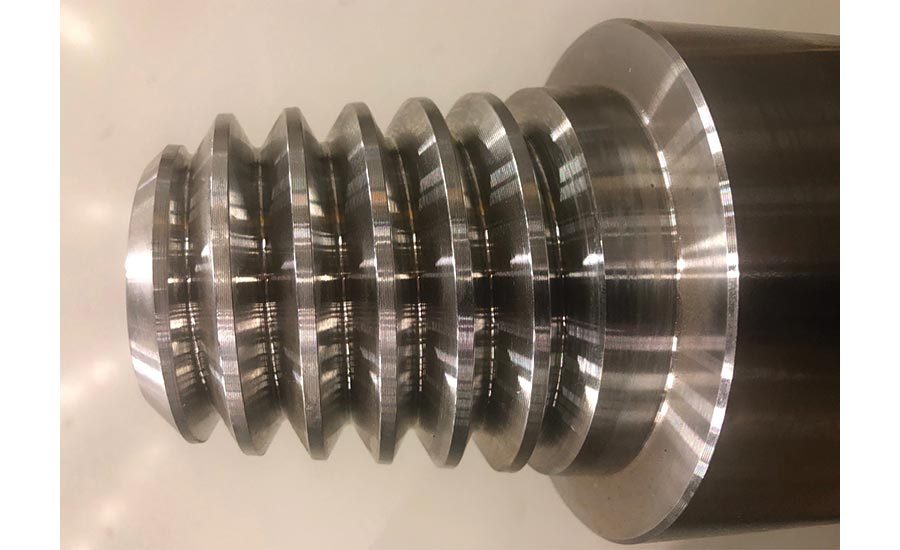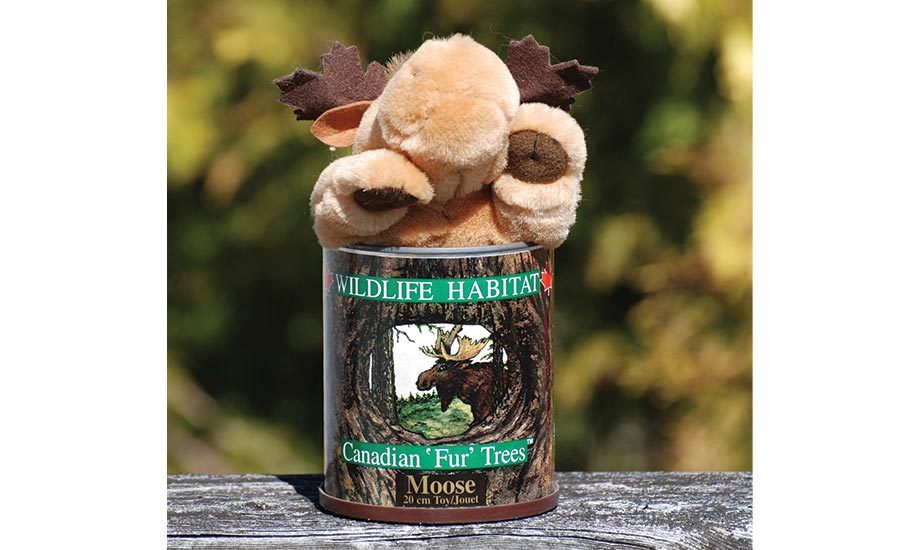Troubleshooting Drill Pipe for a Remote Canadian Mine

This is a BECO thread, which is coarse and heavy duty. It is designed for rotary mining applications where there is plenty of bit weight.
Source: Driconeq



A new mine, Troilus, opened outside of Chibougamau, Quebec, several years ago. They had purchased several Atlas Copco DM45 rigs and the drilling conditions were difficult. They were having a problem with breaking pin-and-box threads on their drill pipe, and I got the call.
My first question was, what is a Chibougamau? Located in central Quebec, the small town (pronounced “shi-boo-gah-moo”) has grown in importance because of copper and gold deposits. These deposits, discovered in early 20th century, resisted attempts to mine them due to the remoteness of the area. But, as roads and rails built out, mining flourished.
I flew from Montreal to Chibougamau, where Atlas Copco (now Epiroc) sales people met me. We stayed in Chibougamau and headed to the mine the next day. We drove for some time, mostly on graveled roads in an area under tribal authority. At one point, we stopped along a creek for a quick break. You could smell the fish. (My fly fishing friends would drool.)
After arriving at the mine, we heading out to investigate the problems. In cases like this, it is very important to do your homework — and I had done mine. They were running 5-inch drill pipe on their DM45 with down-the-hole hammers. They started with 3½ Reg connections but had problems with thread galling. They switched to 3½ Beco pipe, and these were breaking pin and box threads.
The Beco threads are heavy duty, with two threads per inch and a deep, thick thread form. While designed for drilling with tricone bits, where there is tremendous down pressure, I had heard about susceptibility to breakage in difficult DTH drilling situations. I made some calls to discuss it further.
I made my first stop at the mine to the bone pile, where they stack damaged drill pipe. For a relatively new mine, the size of the stacks there surprised me. I checked some of the diameters, and wear was not the major cause. With the IRT4/DM45 drill pipe design, you can tell wear just by looking at the hexes and recessed shoulders. I found about 40 pieces, probably $80,000 in today’s money — enough to hurt the bottom line, especially when you consider the downtime to trade out drill pipe on the rig.
Quite a few of the 3½ Reg connections I saw had severe thread damage and a few had broken pins. These broken 3½ Reg pins could have snapped off because thread damage kept them from properly shouldering. The bone pile also had quite a few of the Beco drill pipe with broken pins, and even a couple with broken boxes. This inspection steered me to agree with my first instincts: Beco was not an ideal choice in this situation.
I discussed my observations with Atlas Copco tech man Lauri Punkari, and we were on the same page. We need to get away from the Beco. Drilling conditions were very difficult.
The two standard thread offerings for these rigs were the 3½ Reg and the 3½ Beco. The drillers on site had severe problems with Reg threads in the past. I suspected those problems were due to new operators learning to run these new rigs. I did not want to recommend a trip back to the 3½ Reg, just in case these galling issues could arise again. Yet, Becos were breaking. So I went a different direction.
The design on 5-inch drill pipe on the DM45 differs between the 3½ Reg and the 3½ Beco. The 3½ Reg design calls for a 4-inch hex and the 3½ Beco calls for a 4⅝-inch hex. If we opted to go back to the 3½ Reg design, we would need to change the cups on the carousel.
Punkari and I talked it over and chose a 3½ IF connection, which has four threads per inch. It would not be as fine as the five-thread Reg, but would help with any galling issues. The IF, being an API connection, would withstand the pounding from the hammer better than the Beco. The 3½ IF is similar in size to the 3½ Beco, so we could use the 4⅝-inch hex and not change carousel cups.
We sat down with the mine manager to offer our suggestion. I had to be careful, since the mine manager made the decision to go to Beco in the first place, but his experience was rotary and not DTH. When the 3½ Reg drill pipe was having galling issues, it made sense to switch to Beco. Most people are not aware of the potential problems for Beco with DTH hammers.
I explained that the Beco, designed for drilling with tricone bits, had a “tweak” to better withstand down pressures. With DTH, the down pressure is significantly less. In difficult drilling condition with DTH hammers, it lacks the support that standard API conditions provide. We presented the plan to switch away from the Beco to the 3½ IF. It would provide a stronger connection with a coarser thread than the Reg and offer a design better suited to DTH hammer work.
They followed our recommendation and ordered new 3½ IF drill pipe, along with new top subs, hammer subs and lifting bails. I was lucky. We had a solution. Everyone was on board with it and, in the long run, it worked out. I was there solely as a consultant. The only skin I had in the game was my reputation as a consultant. But, when the guy offering the solution is the same guy selling you the product, I think it adds some doubt.
In the end, Atlas Copco hired me — I think partly because I had fresh eyes and partly to confirm a plan of attack to solve this problem. Maybe there were conflicting ideas on the table and they needed a tie breaker? Either way, the problem was solved.
My flight back to Montreal was not until the next morning. I took some time to do a little shopping for gifts to take home. My wife, Randy, is a fan of mooses and finding moose gifts was easy in northern Canada. I bought her a moose in a can. When you opened the can, there was a stuffed moose inside. (At first, she thought it was canned moose meat and was not happy with me.) The next morning, I hopped a puddle-jumper and made my way back to Montreal.
Thank you, Lauri, for your insight and help; Richard Melvin, for his technical assistance; and Atlas Copco for trusting my judgement. It was a successful trip and I got to visit Chibougamau.
Looking for a reprint of this article?
From high-res PDFs to custom plaques, order your copy today!






